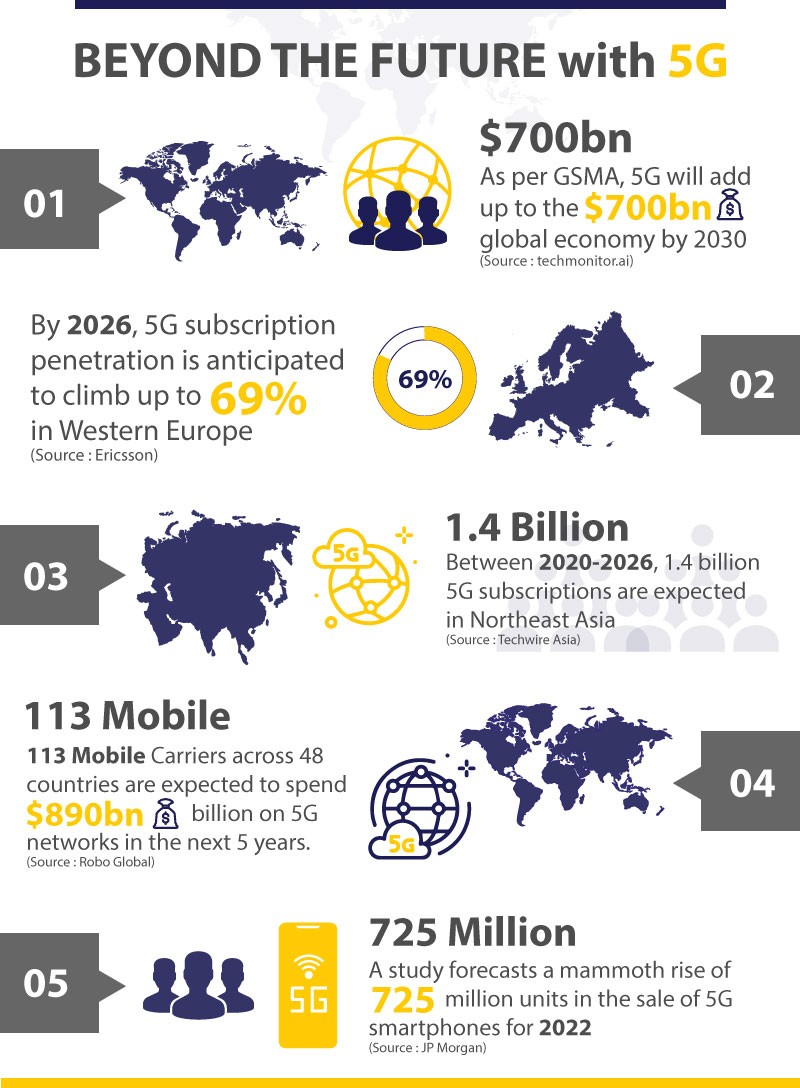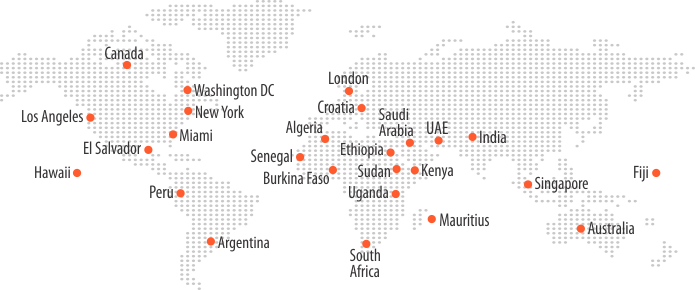The Global Scenario of 5G Adoption in Telecom Industry

Almost all new flagship smartphone now has 5G functionality, and telecom operators are preparing for a surge in prospective 5G user base with the new phone models that will be launched in the coming days. Although 5G’s rapid speed and seamless connectivity have been advertised for a long time, the infrastructure required for 5G-capable towers has taken much longer. Experts now predict 5G revenue to soar in the upcoming years, with some businesses likely to be benefitted more than others.
Just like mobile phones, Wi-Fi networks, and satellite networks, 5G also uses similar radio frequencies, but gives the benefit of next-generation. With the increasing adoption of 5G around the world, it may help them to enhance communication and collaboration through high-end productivity of video conferencing, interactive digital whiteboards, Virtual Reality (VR)/Augmented Reality (AR) technologies.
Let’s take a look at the future of 5G adoption across the globe:
How 5G will Transform Telecom along with Other Industries?
The 5G standard is in high demand among both consumers and businesses. Growing adoption of digital, cloud, and security concerns in a variety of industries, such as automotive, logistics, retail, entertainment, and manufacturing, will boost the demand for 5G mobile and wireless communications technology. 5G technology is likely to become the foundation for the future of smart cars, virtual reality apps, and industrial IoT, allowing uninterrupted connectivity at rapid speed. This technology advancement means a slew of potential use cases for many businesses.
Here is the list of key use cases of 5G in the telecom, manufacturing, automobile, and infrastructure development industries:
Wireless Industrial Flexibility
With 5G wireless network, IoT sensors are being used extensively by the telecom, manufacturing, and automobile industry to track performance, augment output, and logistics. They will be able to further optimize connectivity, develop interconnected and semi-automated smart factories, and stimulate visibility across the supply chains with lower latency and greater wireless flexibility.
Improved Mobile Broadband
The 5G technology will elevate mobile computing capability to new heights through the use of mm-Wave antennas, opening the door to high-speed, cloud-connected experiences with real-time responsiveness. According to the most optimistic estimates, 5G would be able to deliver peak throughput of up to 20 Gb/s and maximum throughput of 1 Gbps when users are mobile. It facilitates rapid optimization and dynamic decision-making in response to on-the-ground realities.
Massive Machine-type Communication (MMTC)
As 5G technology continues to evolve, it will be easy to seamlessly integrate embedded sensors in any device, accelerating the adoption of IoT across industries such as manufacturing, automobile, infrastructure development, and telecom. 5G will play a significant role in enabling smart cities and smart homes with greater connectivity, rapid data exchange to facilitate highly advanced and connected security systems, intelligent parking, and traffic management systems. In addition, 5G network slicing allows the power grid to quickly switch between several slices, each with a particular network capability and different Service Level Agreement.
Ultra-Reliable Low-Latency Communications (URLLC)
Multiple potential applications, such as self-driving cars, robotics, and drones, require a unique data transmission with ultra-high resilience and schedule-based low latency specifications. Some carriers are now looking into the idea of 5G replacing GPS for geolocation, which might make it more competitive with satellite.
Advancing with 5G Adoption
5G offers better bandwidth and lowest latency helping improve the efficiency of VoIP services and enhance video conferencing and group audio calls. The internet speed will no more be a constraint for data-heavy applications with increasing 5G penetration across the world. This new surge of wireless communication and 5G go hand-in-hand to solve the complexities of the telecom industry and upgrade the performance of telecom service providers.
Related Posts
Impact Of 5G On Unified Communications
The Role Of Cloud-Based IMS In The Growth Of 5G Network







